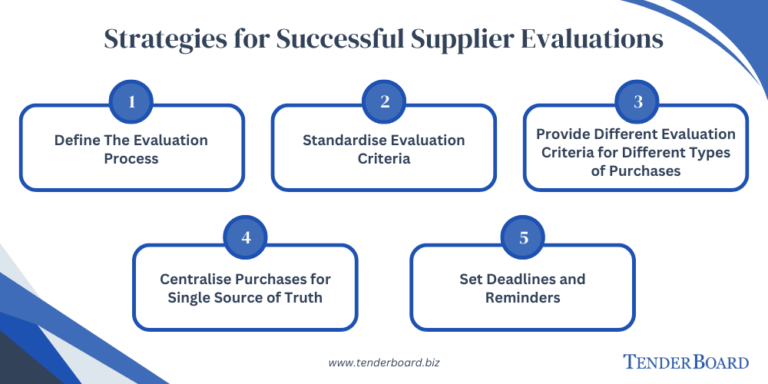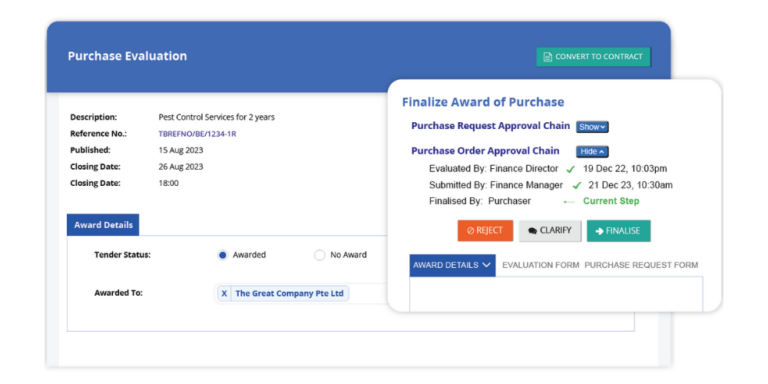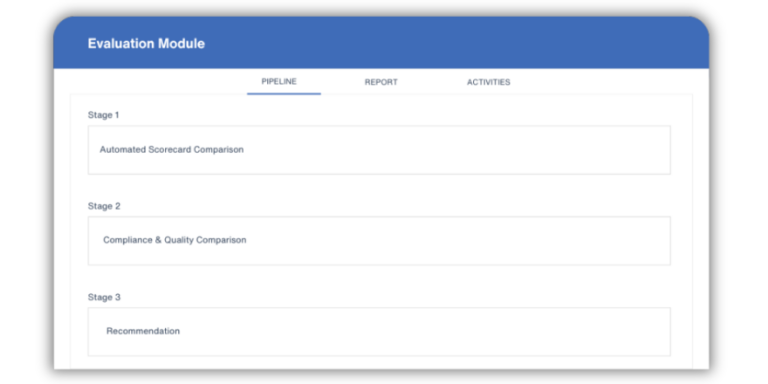
Although the supplier assessment process can be tedious and time consuming, there are several benefits of supplier evaluation that will positively impact your business operations.
There are several methods to carry out supplier evaluation assessments, each with their own merits and challenges.
Below we share 3 methods of supplier evaluation:
What is it: This is a quantitative approach to supplier evaluation, involving the scoring of suppliers based on criteria weighted according to their importance. The criteria commonly includes price, delivery timeline, compliance, ESG rating and more.
How is it performed: Once all proposals are received, the evaluator(s) receive the proposals together with a scorecard. They then assign points to each criteria for each supplier, and the total score is calculated by multiplying the given points by their corresponding weightage. The supplier with the highest score is deemed the most favourable option.
Pros: The weighted point method is clear, transparent and simple in its execution. All evaluators are given the same scorecard and the selected supplier is objectively chosen based on the total scores received.
Cons: However, this method may not capture all relevant considerations, such as the supplier relationship or reliability. Scorecards with qualitative criteria such as quality or customer service may also hinder objective evaluation.
What is it: The cost-based method represents another quantitative approach to evaluation, assessing the total cost of engaging business with the supplier.
How is it performed: In such evaluations, a dollar amount is determined for all factors of the purchase, such as transportation cost, quality cost, opportunity cost, and potential hidden costs. From there, all these expenses are included into the assessment, and the supplier with the lowest cost is considered the most favourable option.
Pros: This method is likely to closely align with business objectives, offering companies a realistic expectation of the financial commitment from the supplier.
Cons: However, assessing the total cost can be complex and time-consuming, and it may not accurately evaluate non-financial factors.
What is it: The Price-Quality Method, Price-Quality Matrix or PQM, combines both quantitative and qualitative evaluation, where companies evaluate both pricing and quality together to select the supplier that fits both evaluation criteria.
How is it performed: In such evaluations, price quotations and proposals may be submitted separately. Quotations are scored based on a scorecard with predetermined criteria for each score. Proposals are assessed and scored by evaluators with a predefined list of requirements. Both scores for each supplier are combined, and the supplier with the highest total score is considered the best option.
Pros: The PQM method offers a more comprehensive evaluation of suppliers by considering both cost and quality factors.
Cons: However, this can be a tedious and time-consuming process that may prolong purchasing cycles if evaluations are not performed timely. Ensuring compliance during the bid submission and evaluation stage may also require more manpower if performed manually.
Successful supplier evaluations are performed methodically and consistently. This ensures all stakeholders, including purchase requestors, evaluators and suppliers, are aware of the criteria required for a successful relationship.
Here are five strategies to help you implement successful supplier evaluations within your organisation:

Clearly defining evaluation workflows provides transparency and clarity for staff. Evaluators know when they need to assess purchases, ensuring evaluations are conducted promptly and systematically. This clarity reduces confusion and ensures that all evaluations follow established guidelines.
Predetermined criteria encourages impartial evaluation, as all supplier bids are scored based on the same requirements. This consistency ensures that suppliers are assessed fairly and objectively.
Maintenance contractors and IT equipment suppliers should not be evaluated the same way. By tailoring evaluation criteria to meet the specific needs of different types of purchases, organisations can ensure evaluations are performed thoroughly and appropriately for the scale and complexity of the purchase. E.g. small value purchases could have a single evaluator, while million dollar purchases may include technical evaluators.
A central source for all purchasing information provides staff easy access to any relevant information required for evaluation. This minimises the time and effort needed to gather information from disparate sources, and reduces purchase workflow bottlenecks.
Setting deadlines and sending reminders helps to ensure that evaluations are conducted in a timely manner, reducing the risk of missed deadlines and potential disruptions to your procurement process.
Managing thorough supplier evaluations manually is often a tedious process, with more manpower required to ensure corporate governance and compliance. But your supplier evaluation processes shouldn’t be at the mercy of manual labour. Through digitalisation and automation of your procurement workflows, supplier evaluations can be more effective and streamlined than ever.

TenderBoard’s supplier evaluation module offers easy and seamless evaluation. With highly configurable fields and criteria, companies can pre-determine requirements for different types of purchases, allowing evaluators to perform qualitative and quantitative evaluation quickly and effectively.

Quantitative scoring can be configured into the system, automatically calculating the scores for each supplier bid. For qualitative evaluation, TenderBoard automatically sends out the evaluation criteria to evaluators, with reminders at predetermined intervals to ensure evaluations are completed timely.
Keen to learn how you can evaluate suppliers efficiently and effectively? Reach out to us today.


August 9, 2022

November 10, 2021

August 21, 2024

July 5, 2023

December 8, 2020

November 24, 2021

June 20, 2023

February 21, 2022

August 17, 2023
TenderBoard provides businesses with a peace of mind by facilitating transactions between buyers and suppliers throughout the source-to-pay process. The platform provides real-time data, competitive analysis and business opportunities while ensuring corporate governance.